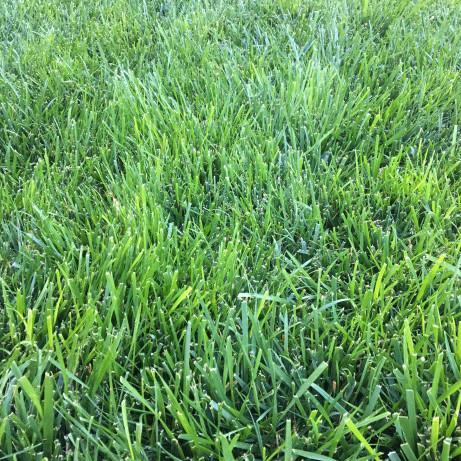
Georgia’s Fescue sod is a cool-season lawn turf that thrives in cooler climates and transition zones. It is well-suited for cool, moist growing conditions. Fescue doesn't do well in dry weather and needs to be frequently watered in the summer. An irrigation system or the ability to extensively water your lawn is recommended. Tall Fescue grass and sod is considered the perfect grass for transitional areas that are too hot for other types of cool-season grasses and too cool for warm-season grasses. Fescue sod does particularly well in areas that are heavily shaded.
Tall Fescue sod is a type of sod that can best survive in a climate that is cold and has extremely low light. It is primarily found in Europe because of the cold weather and locations near coastal areas, seashores, grassland with lots of moisture, and on the banks of rivers but in the northern part of the hemisphere. In the 1800s, this grass was introduced in the US as a lawn grass, but soon, its special features were used for agricultural purposes. The people who want to establish a pasture farm buy pallets of Tall Fescue sod from Atlanta Sod Farm . The locations mentioned above are ideal for it, but exposure to drought for too long can make it inactive. Unlike other types of sod, Fescue grass in Georgia can easily grow in minimal sunlight. A pallet of tall Fescue sod can grow in places where the soil is rocky, sandy, or has clay in it. But be very careful as it can’t bear heavy foot traffic, although the overall grass is tough and can be difficult to trim. As the grass grows very well in moist weather, an irrigation system must be used to water it. This must be specially done in the summer season to avoid withering.
| Hot Weather Tolerance | Poor |
| Shade Tolerance | Excellent |
| Wear Resistance | Good |
| Salt Tolerance | Poor |
| Injury Recovery | Moderate |
| Winter Color | Green |
| Mowing Height | 2-4 inches once/week. Disease, Weed, and Insect Resistance: Fairly good weed control and good fungus control during cool months. Will require some attention during hot months. |
| Soil and Fertilizer | Tall Fescue sod Grows well in clay to sandy soils neutral to alkalize soils. Above tolerance for acidic soils p.H. level of 4.5 to 8.5. Need 1 pound of actual nitrogen per 1,000 feet per growing month or every 45 days. Fertilize twice per year with 10 pounds of 10-10-10 per 1,000 feet. |
| Watering | During Fescue sod establishment, water every day so that the soil is soaked 3-4 inches deep. Do not allow to wilt. An additional watering might be needed. The primary watering should be done between 1 p.m. and 5 p.m. Established sod should be watered every day during the hot months and about every 4-7 days during cooler months |
| Mowing | Every 4-7 days at height of 2-4 inches. |

